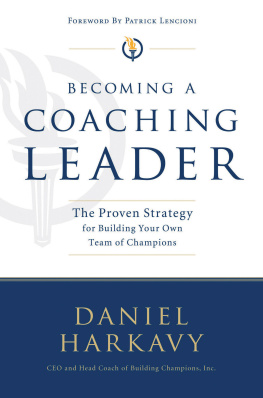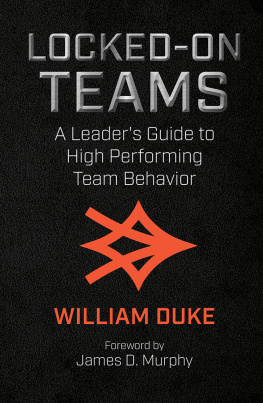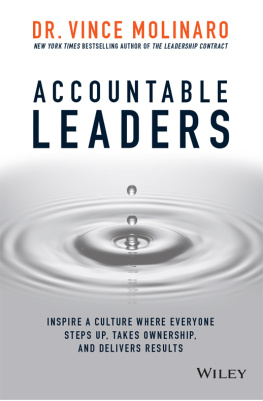

Copyright 2019 by John Wiley & Sons, Inc. All rights reserved.
Published by John Wiley & Sons, Inc., Hoboken, New Jersey.
Published simultaneously in Canada.
No part of this publication may be reproduced, stored in a retrieval system, or transmitted in any form or by any means, electronic, mechanical, photocopying, recording, scanning, or otherwise, except as permitted under Section 107 or 108 of the 1976 United States Copyright Act, without either the prior written permission of the Publisher, or authorization through payment of the appropriate per-copy fee to the Copyright Clearance Center, Inc., 222 Rosewood Drive, Danvers, MA 01923, (978) 750-8400, fax (978) 646-8600, or on the Web at www.copyright.com. Requests to the Publisher for permission should be addressed to the Permissions Department, John Wiley & Sons, Inc., 111 River Street, Hoboken, NJ 07030, (201) 748-6011, fax (201) 748-6008, or online at http://www.wiley.com/go/permissions.
Limit of Liability/Disclaimer of Warranty: While the publisher and author have used their best efforts in preparing this book, they make no representations or warranties with respect to the accuracy or completeness of the contents of this book and specifically disclaim any implied warranties of merchantability or fitness for a particular purpose. No warranty may be created or extended by sales representatives or written sales materials. The advice and strategies contained herein may not be suitable for your situation. You should consult with a professional where appropriate. Neither the publisher nor author shall be liable for any loss of profit or any other commercial damages, including but not limited to special, incidental, consequential, or other damages.
For general information on our other products and services or for technical support, please contact our Customer Care Department within the United States at (800) 762-2974, outside the United States at (317) 572-3993 or fax (317) 572-4002.
Wiley publishes in a variety of print and electronic formats and by print-on-demand. Some material included with standard print versions of this book may not be included in e-books or in print-on-demand. If this book refers to media such as a CD or DVD that is not included in the version you purchased, you may download this material at http://booksupport.wiley.com. For more information about Wiley products, visit www.wiley.com.
ISBN 9781119574309 (Hardcover)
ISBN 9781119574514 (ePDF)
ISBN 9781119574415 (ePub)
Cover image: lvcandy/iStockphoto
Cover design: Wiley
To our teammates, both those who are and those who
are no longer with us.
Introduction
DECEMBER 9, 1999, was almost the last day of my life, and I still get nervous when I think about it.
Ten of my Force Reconnaissance Marines and I were training for our deployment to the Persian Gulf. We were riding in the back of a helicopter, practicing maneuvers for vessel, boarding, search and seizure (VBSS) missions. Rather than coming in to a 60-feet hover over the ship we were practicing taking over, our helicopter came in too low and too fast and struck the side of the ship.
Recognizing his error, the helicopter pilot pulled on the collective, which would typically give lift to a helicopter, but on that day, the back left wheel was stuck in the thick metal netting that surrounds many large cargo vessels. With the wheel stuck, the helicopter inverted and plunged into the Pacific Ocean. My Marines. My teammates. We were all immediately knocked unconscious.
Im Eric Kapitulik, the Founder and Chief Executive Officer of The Program. The Program is a team-building and leadership development company that annually works with more than 150 collegiate and professional athletic teams, and corporations of all sizes. We have one mission: Develop Better Leaders and Create More Cohesive Teams. My Program teammates and I have been doing so for more than a decade.
Achieving the Ultimate Victory
Many families, athletic teams, and corporations do well. They win games. But many teams, whether athletic, corporate, or family, want more. They want the big prize. The championship trophy, the cover of Fortune magazine, the love and respect of many generations. The question they all want answered is: How do we achieve more? More from our teammates? More from our leaders? More together?
This book will provide readers, on whatever their chosen battlefield, with a road map to compete for championships. First, we will discuss what a Championship Culture is, define the Core Values that form the cultures foundation, and develop the goals and standards that reinforce our Core Values on a daily basis. We will then discuss how we create an environment where all members of the team are committed to achieving those goals and standards.
Next, we will highlight the standards to which teammates and team leaders are held and how we createdespite the discomfort all of us feel while doing soa culture of accountability in order to achieve the best versions of ourselves and our team.
We then discuss what we must do every day of our life while preparing to be the best teammates and best team leaders that we can be, on all the teams of which we are privileged to be a part, including our most important team, our own family. Specifically, developing our physical, mental, and emotional toughness, not making excuses or letting others make them for us, and defining hard work and committing to it.
Finally, effective communication is key for both teammates and team leaders; no organization can achieve prolonged, sustained success without it. The final chapters review what effective communication means, how to develop it, and then how to ensure our teams carry it out.
The Program team has led men and women and made decisions when those decisions had life-and-death consequences. Like my own....
Surviving a Catastrophic Crash
We awoke in a sinking helicopter, wearing 5075 pounds of gear, weapons, equipment, and ammunitionwith no oxygen and no idea how to get out of our dire situation. I fought my way through the helicopter as it sank, looking for a way to exit. Then I started to swim, and only then did I feel true fear.
When the helicopter inverted, its blades sheared off, but the engines were still turning, causing bubbles to surround us deep beneath the oceans surface. By the time we fought our way out of the sinking helicopter, we were deep in the dark Pacific Ocean, still wearing all that very heavy gear. I dont care how mentally and physically tough we may be, none of us can hold our breath indefinitely. Eventually, your body gasps and air rushes into your lungs. But if youre deep in the ocean, salt water rushes in. My teammates and I were underwater for so long, looking for a way to exit that sinking helicopter, that by the time we started to swim, we were all drowning.
Our bodies were shutting down. Our worlds were going black. I still get scared thinking about that moment when I first started to swim, because I can still remember thinking to myself, I hope Im swimming in the right direction.
Making things even more challenging was the fact that the helicopter had hit the water with such violence that it caused a compound fracture in my leg. So when I swam in a direction that I hoped was the surface, while drowning, I did so using only my arms. The bones in my right leg were completely severed.
A few meters below the oceans surface, I could see sunlight filtering through the water, and a few moments after that I was picked up by a safety boat. I had survived. Unfortunately, six of my Marinessix of my teammateslost their lives that day.
Next page









